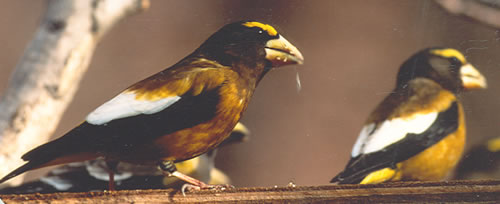Between
December 14, 2004 and January 5, 2005, a flock of bird watchers
will participate in one of the longest running data collection
programs in the United States - the Christmas Bird Count,
better known as the CBC. This count will celebrate the event’s
105th anniversary. Over 50,000 birders in almost 2000 counts
will either take to the field or watch their backyard bird
feeders to gain a better understanding of winter avian distribution
and status conditions of bird populations in early winter.
The idea for this event was hatched during the turn-of-the-century as
a nonconsumptive way to enjoy birds around the Christmas holidays. Organized
by Frank Chapman of the then fledgling Audubon Society, this affair was
a sharp contrast to the ASide Hunt@, a daylong blasting excursion whose
participants attempted to shoot more birds than their competitors. Known
as the “Christmas Bird Census” this count was a radical departure
from the normal bird hunting pursuit.
Back then bird watchers were akin to circus freaks. They were more of
oddities than the birds blown off-course by winter storms. I’m
sure reports of “peeping Toms”, individuals scanning residential
homes for birds, were received by the police. That first year, 27 participants
counted birds in 25 different locations from Massachusetts to Monterey,
California. Their 90-species total represented the hatchling from which “birding” would
fledge.
So what happens during a CBC? At the initial organizational meeting,
teams are assigned to cover different sections of count area. The organizer
distributes maps and data sheets to the section leaders, who in turn
recruits (shanghais, if necessary) a team for the day. Depending upon
the leader, the teams will either venture out early on count day or meet
for a second round of hot drinks before they enter the circle.
The Moab count zone, a 15-mile diameter circle centered on Shrimp Rock
in the Sand Flats Recreational Area, contains a variety of habitats from
wetlands to canyons, riverine to montane, residential to industrial.
Across this terrain the teams walk, drive, bike, wade, or wander in search
of feathered creatures. Numbers of individual species go into the data
sheets; unusual or unlikely species require the completion of additional
sheets and testimony at a later date. Rock doves, formerly known as “Pigeons”,
count, but plastic flamingos do not.
I don’t remember any counts being rained out, but I do remember
some bitter cold days. But those days are tropical in comparison to those
Alaskan counts were the temperature never climbs above zero degrees,
and where the species count and number of individuals seen can be recorded
on one hand. Those fowl days (pun intended) test the limits of people
and equipment.
In contrast, the Moab count averages about 70 species and thousands of
individuals. This represents a good mix of passerines and waterfowl,
with some eagles and hawks thrown in. Surprisingly the number of reported
owls is usually very low, much lower than expected. Some years, groups
have gone out after the day’s count and use taped owl calls to
elicit responses. Good thing identification by song or call counts on
those cold, dark nights.
The following day, a potluck brunch is held to tally the results. Suspect
species are questioned, rare species are envied. The group goes through
the count results since there are still three days, after count day,
to record species missed during the count. There is a drawing held for
a bird-related door prize, often to the winner of the Total Starlings
Count.
The CBC is open to all interested individuals from novice to professional.
The Moab group organizes participants by ability and desire, so the mixed
flocks of birders may contain beginners and more experienced individuals.
The rewards are many, other than lots of fresh air and cold weather.
To participate in the Moab count, to be held on December 18th, contact
Rick Boretti at 259-4050. |

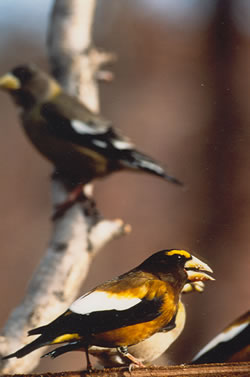
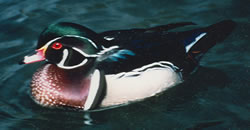
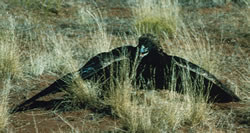
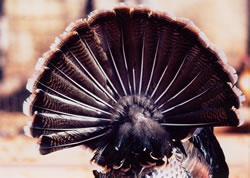
|






